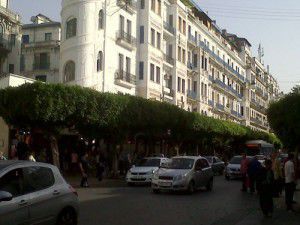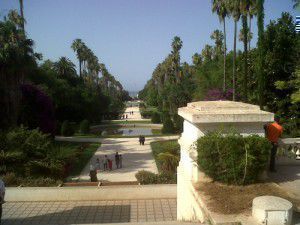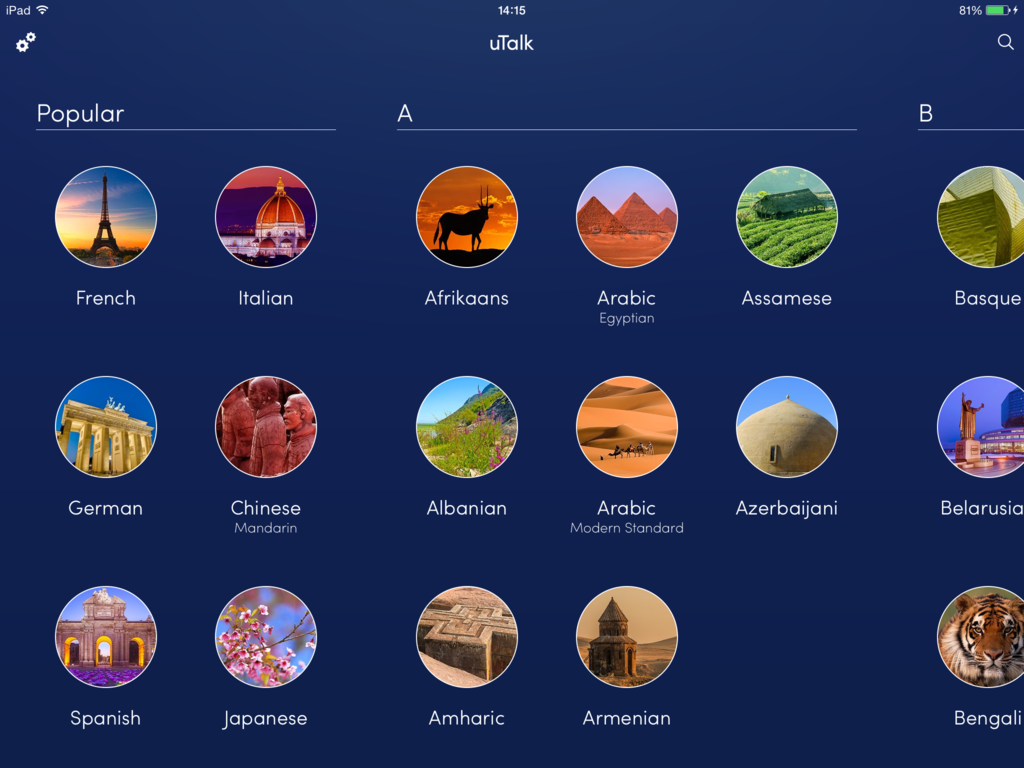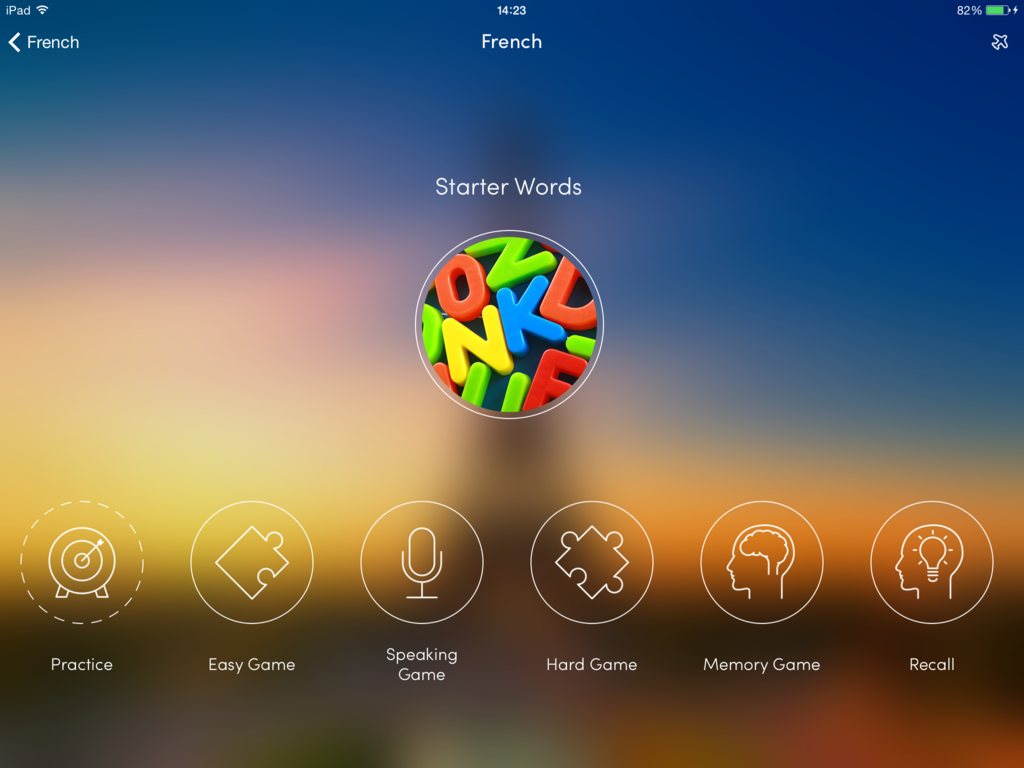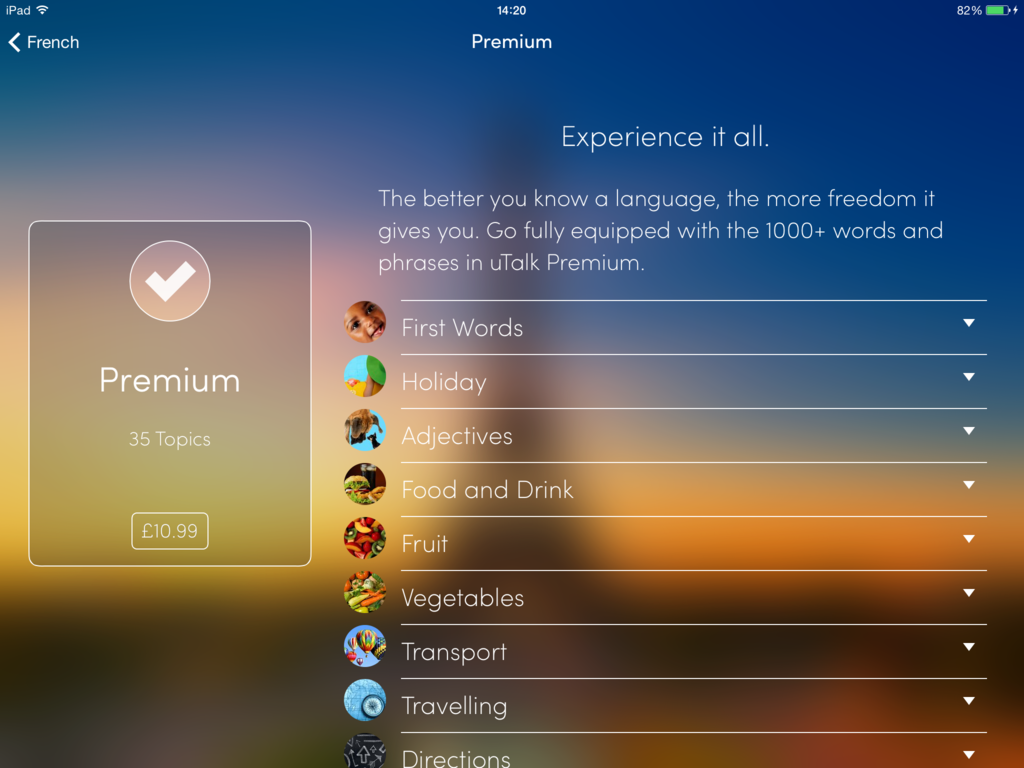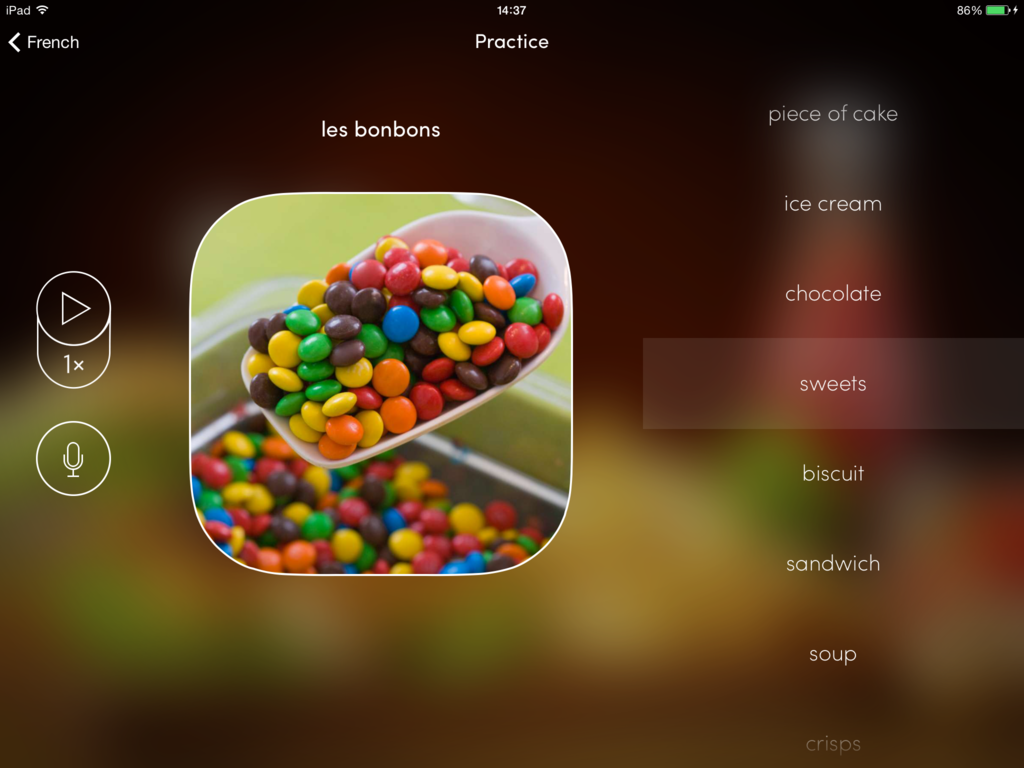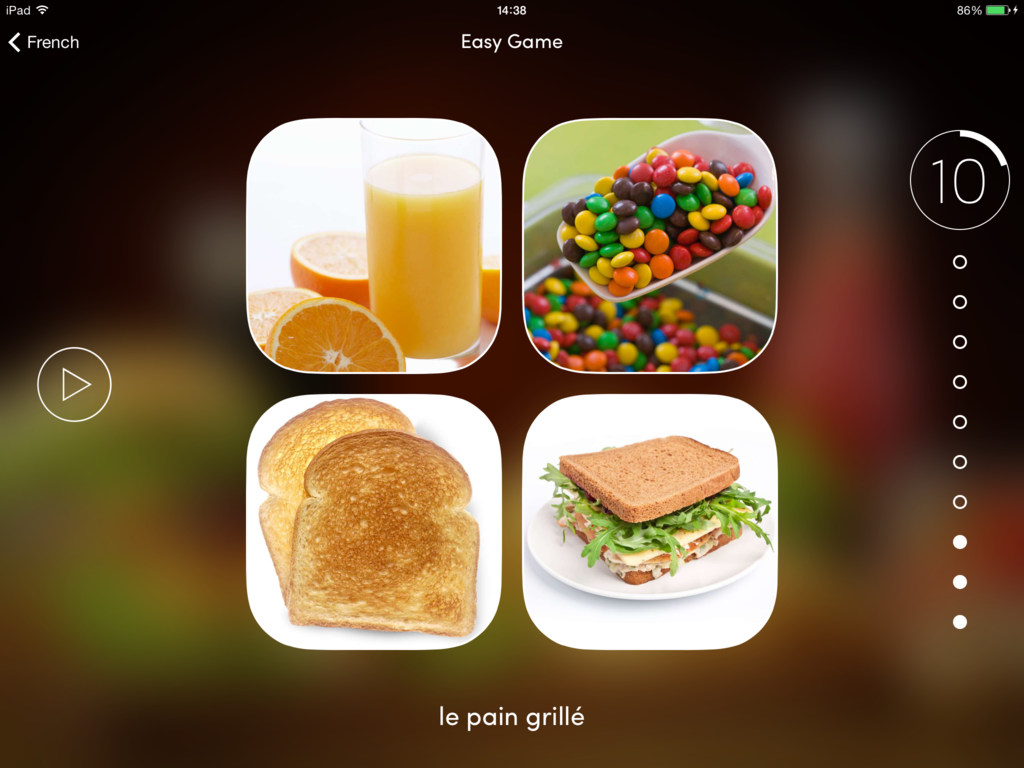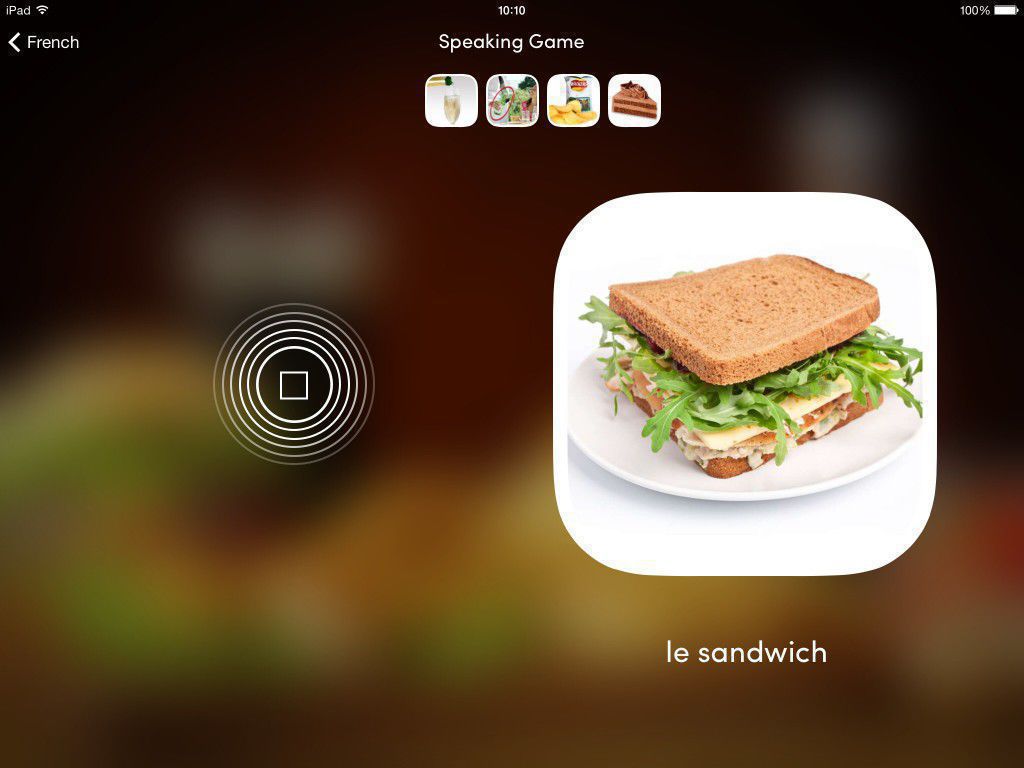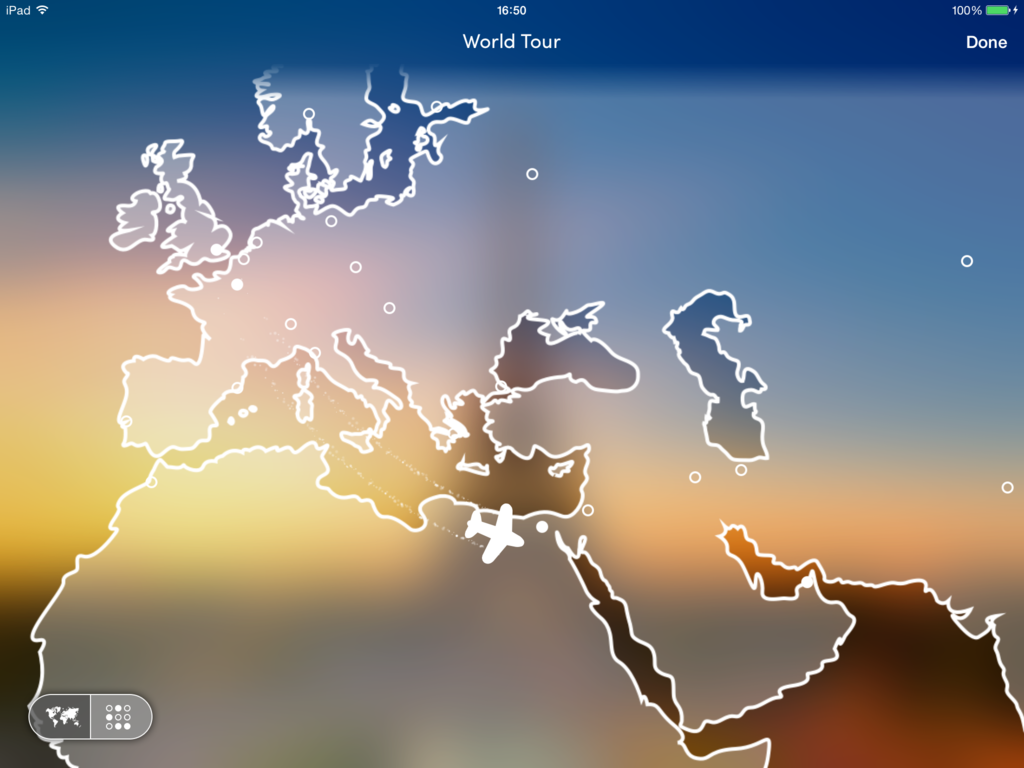10 reasons to visit… Algiers
I must admit that Algeria does not feature highly among people’s bucket list destinations.
While most tourists visiting the region flock to Egypt or Tunisia, Algeria is still very much off the beaten track. Nor does it help that it has attracted a rather bad press over the last year or so: much of the country is a security risk and the FCO advises against all travel to half of the Algeria, and all but essential travel to much of the rest.
Chickened out? Well, there is always its next door neighbour Morocco, which admittedly has done much to develop its tourist industry over the years.
‘Ah but I’ve been there already’, you say, ‘I’ve stayed in a posh riad, I’ve had a ride on a camel and I’ve stocked up on more of those pointy slippers than I’ll ever need.’
Quite. So you’re looking for the real deal, are you? Well, the good news is that Algiers, the capital, is very much worth the detour, untouched by Easyjet, and better still, firmly in the ‘OK to visit, but be careful’ bit of the country. I was lucky enough to go twice, and here I am writing this: all bodily parts present and correct, wallet intact, and dignity unscathed.
As it happens, I was working on a project with one of the government ministries. This meant that I was fortunate enough to be met at the airport and whisked through immigration and customs in seconds. I also benefited from a security detail which picked me up and accompanied me wherever I went: a pair of friendly enough goons, wearing shades and Blues Brothers suits (sans hats), constantly tailing us in a slightly scruffy VW Polo – not a Bluesmobile.
So here are my ten reasons to visit Algiers (and a bit of the surrounding area):
1. The city centre
Algiers has a faded, run down beauty. The centre of the city is full of white stuccoed buildings in the French colonial style and you’ll love exploring the up-and-down streets and avenues. Pack a pair of stout walking shoes though, as it’s a hilly place. And as you take a break, sipping a coffee and people watching at one of the many excellent cafes dotted around town, you may be wondering where all the tourists have gone. Don’t worry: the last ones left circa 1962, so you really will have the place to yourself.
2. The view
You may find yourself in accommodation higher up and somewhat away from the city centre, with the city stretching out below you. Not for nothing is the city called ‘Alger la Blanche’.
3. Public transport
I found a little cable car that takes you down the hill (i.e. from the residential suburbs to the city centre) to the sea and Botanic Garden in just three minutes. There’s also a one-line metro that crosses the city, which, when I used it, was virtually empty. I wondered whether people had in fact been told it had recently opened – or maybe they simply refused to pay the 15p fare.
4. Cheap fuel
Petrol in Algiers costs only around 10p per litre. No, this is not a misprint for 110p. Algeria is, after all, still one of the world’s leading oil producers.
5. No retail chains
Should you require a fix from KFC, McDonalds, Zara, or any other global retailer for that matter, please leave Algiers immediately. To remind you, this is not Morocco. However, with your 4 X 4 filled up with 10p petrol you could probably drive there.
6. The food
If you enjoy your French food, you might like Algiers’ version of it. The seafood is excellent, especially when washed down with a glass of Oran wine, which is not bad at all. Alternatively, if you enjoy your coucous you’ll love the Algerian varieties. Do not expect Michelin star joints: most eateries are small and family run.
By the way, you will need to hone either your French or Arabic speaking skills when you negotiate your way around town, as very few people speak English. I strongly suggest a purchase of uTalk prior to departure.
7. The treats
Do you have a sweet tooth? There are countless well stocked patisseries wherever you look, with everything from tiny sugar dusted and intricately decorated almondy cakes to classic croissants on display.
8. Le Jardin d’Essais du Hamma
The botanical garden, Le Jardin d’Essais du Hamma, is lovely: classically designed, it is formal, tropical and a respite from the heat, especially if you’re visiting during the summer.
9. Tipasa
One day we were taken along the coast to the sleepy little seaside town of Tipasa, which goes back 2,000 years, and where it is possible to visit the remains of the Roman city. In fact Tipasa became one of the most important ports in Ancient Rome.
10. Notre Dame d’Afrique
If you are determined to venture high enough in the city you’ll find Notre Dame d’Afrique, a 19th century Catholic church, which is an official monument and commands views of the Bay of Algiers and the harbour. Its architecture is fascinating: a successful blend of Eastern and Western influences.
I can’t end my snapshot of Algiers without a quote from one of its best known sons. In his 1936 essay, ‘A Summer in Algiers,’ Albert Camus wrote: ‘In Algiers one loves the ordinary places: the sea at the end of every street, a certain volume of sunlight…’ What more can you ask for?
Steve
10 reasons to visit… Tokyo
To finish up our Japanese week, Safia’s written today’s blog post on her top ten reasons to visit Tokyo.
Do you live in Tokyo, or have you visited? Please share your own top tips in the comments!
1. The old and the new
Before I even start talking about specific points of interest, all you need to do is to walk down the street to see how traditional and modern Japanese culture both collide and sit beautifully side by side. Temples of all shapes and sizes pop up everywhere in between buildings and houses (many of which are open to the public), kimonos and yukatas are still worn as everyday wear and not just for special occasions, and I will never stop being excited about literally being able to buy anything under the sun from a vending machine.
2. Harajuku/Meiji Temple
For the weird, the wonderful and the fandom, Harajuku is the place to be to find the centre of Japanese youth and fashion culture. If you like to people-watch, there are usually a handful of cosplayers or colourfully dressed youths hanging around the station area and the backstreets are packed with little independent boutiques. In stark contrast, Meiji Jingu is also located here with the entrance round the corner from the station, and is an Imperial Shrine dedicated to Emperor Meiji and his wife Empress Shoken. If you’re lucky enough you may even get to see a wedding, as it is a popular venue for forthcoming nuptials.
3. Tsukiji Market
There are very few places in the world where I would consider waking up at 5am just to get some fish, but Tsukiji Market is definitely one of them. If the idea of raw fish (sashimi) sends you heaving, I urge you to give it another go for the love of tuna that just melts on your tongue. I promise when it’s this fresh and prepared this delicately there is nothing else like it, and there will be plenty of other sushi options as well. Personally as a foodie, I skipped straight to the food, but if you want to see the tuna auction you really have to get there early as there are limited spaces for viewers. Some of the queues for the restaurants can get quite long as well, but surely that’s just testament to how good it’s going to be inside?
4. Boat ride on the Sumida River
Take a journey down the river and under its many bridges to see Tokyo from a different point of view. Jump on at Asakusa where most of the water buses start from and you’re guaranteed to see at least twelve different bridges along this route. If architecture and design spark your interest then this is definitely a trip for you. And if sipping a cool beer on a boat on a sunny day sparks your interest then I’d say this is a trip for you too! There are various routes including a round trip, but I can recommend getting off at the Hama-rikyu gardens for an added sightseeing bonus.
5. Food
When it comes to food, where do I even start? I wouldn’t blame you if the first thing that came to mind was sushi followed swiftly by ramen, but there is so much more to Japanese cuisine. This section deserves its own blog post, but before I get too tempted let me recommend three things that I think you should definitely try on your trip (that doesn’t include sushi or ramen!):
Takoyaki (Octopus balls)
Bearing in mind that’s a literal translation, takoyaki is a batter cooked in a special pan filled with diced octopus, pickled ginger and various other ingredients, all brought together in a handy bite-sized ball.
Okonomoyaki (Grilled savoury pancake)
Quite often this pancake-like dish is cooked on a hot grill right in front of you with the main ingredient being cabbage. Be sure to check if it’s a grill-it-yourself establishment so you’re not sitting there twiddling your thumbs while everyone else is already tucking in!
Yakitori (Skewered food)
Basically, meat on a stick (and sometimes vegetables) but with some amazing local flavouring. If you can find it, there’s a brilliant little alleyway in Shinjuku where local eateries are crammed in next to and top of one another.
6. Izakaya
I can only describe an Izakaya as a cross between a pub and a tapas restaurant in a laid back and cosy setting. Although they can at first seem intimidating to a foreigner, they’re great for unwinding after a long day of sightseeing (or work) and getting acquainted with the locals. If you’re having a tough time looking for one, many still sport a traditional red lantern outside the premises. Food comes as and when ordered and ready rather than in courses and is usually shared between the group if you’re with other people.
7. Karaoke
Surely it’s not possible to go to the motherland of karaoke without actually going to a karaoke bar at least once? Even if you don’t like karaoke, you’re in another country and no one will ever know, unless you accidently post a picture on Facebook. So lose your inhibitions, grab that mic and belt out some tunes in a foreign language! Japanese karaoke is an altogether individual experience and there are such a variety of bars and boxes to choose from, whether you’d like to be surrounded by Hello Kitty memorabilia or even sing from a hot tub. Check out the Shibuya and Roppongi areas as a starting point.
8. Tokyo Tower
At a whopping 634m tall, Tokyo Tower is hands down one of the best ways to survey the city. If you need a break from the bustling streets below, I highly recommend popping up and having a little gander. The night time view is spectacular with Tokyo’s array of high rise buildings and bright lights. During the day if you’re lucky enough to have a clear sky, then you may even get to see some distant points of interest which are very handily marked around the tower for you, such as ‘Mt. Fuji, 97km, that way’.
9. Sakura (Cherry Blossom) season
Around April something magical happens in Japan and it’s called Sakura or Cherry Blossom season. As it’s seasonal the exact time of the year can vary, but if you manage to catch it the flurry of pink and white blossoms can be breathtaking. Sakura hot spots in Tokyo include Shinjuku Gyoen and Ueno Park, both boasting over 1,000 Sakura trees. Be prepared for crowds during peak season as popular areas can get amazingly crowded with Sakura enthusiasts.
10. Asakusa/Sensou-ji Temple
Asakusa definitely has a bit more of an older feel to it compared to some of Tokyo’s other more shiny districts like Ginza. Many of the buildings were built around the 1950s/60s since prior to this most were lost to bombs in war. This included one of Tokyo’s most popular temples Sensou-ji, which was originally built in the 7th century. It was rebuilt after WWII to symbolise peace and rebirth to the Japanese people. To get to the temple you’ll need to navigate your way through the Nakamise shopping street, which is lined with various street food stalls and tourist shops.
One final piece of advice – don’t assume that everyone in Tokyo will speak English, because they don’t! You’ll need to learn at least a few basic phrases before you get there.
Fortunately, there’s an app for that 😉
Safia
All photos property of Safia Griffin
uTalk – Learn a Language: A Guided Tour
If you follow us on Facebook or Twitter (or maybe even if you don’t) you’ll know that we recently released a new update for our app, uTalk. And we’re really, really excited about it; not only does it now work on iPads, it’s got 130 languages included and it looks gorgeous. So I thought I’d give you a quick guided tour, so you can see what all the fuss is about.
Choose your language
Once you’ve download the app, the first thing you’ll probably notice is that it’s got loads of languages. From French, Spanish and German, through to Lao, Kachchi and Cebuano, we’ve got them all (and if we don’t have the one you want, we probably soon will – let us know what you’re waiting for in the comments).
The best bit is if you’re just curious and want to hear what a language sounds like, it won’t cost you a penny, because uTalk gives you a Starter Words section in all 130 languages completely free.
Starter Words
These Starter Words include the essentials that you’ll need when you first arrive in a new country – ‘hello’, ‘please’, ‘thank you’ and ‘help’ (hopefully you won’t need that one, but it’s always a useful word to know!) among others.
There’s also a selection of games to help you remember these key words, so you’re totally prepared before you step off the plane.
Upgrades
If you’re anything like me, though, once you’ve learnt a few words you won’t want to stop. So uTalk gives you the chance to learn more, with the Essentials and Premium upgrades.
The Premium will unlock 1,200 words and phrases across 35 categories for the language you choose – and that’s when it gets really fun. The app’s got everything from food and drink and travelling, to adjectives and numbers up to ten million. You can order a beer, ask someone to dance and check you’re on the right train (again – useful).
How it works
Ok, let’s get down to business. You’re going to France for a few days, and you want to learn some French before you go. How should you use uTalk?
First, choose your topic. Then, start with the Practice; this is where you learn the vocabulary. You can listen as many times as you like, slow it down, even have a go yourself with the recording button. Each word or phrase has a corresponding picture, which will help you remember it later, and they’ve all been translated and recorded by native speakers.
Then it’s time for the games. Start with the easy game, because it’s – well, the easiest. You’ll be shown some randomly selected pictures and hear one of the words you’ve just learnt. Choose the correct picture to carry on and start scoring points.
Then work your way up through the games, which get gradually more difficult. Be warned, they’re very addictive, so you may miss your stop because you’re concentrating so hard. And you might get some funny looks when you play the recording game on the train. I speak from experience on both of these things…
World Tour
Hidden throughout the app are 48 achievements. No, I won’t tell you what they are – but every now and again you’ll see a message pop up that says ‘World Tour Destination Unlocked’, and then at the end of that game, you can go and see where you’re heading off to.
Tap on the destination and watch your plane take off. To see how many destinations you’ve collected (and how many you still have to find) touch the grid icon at the bottom of the screen.
Instant Search
Of course this is all well and good, if you have time to sit and learn the language before you leave home. But what if you don’t?
No worries – just take uTalk with you, and any time you need a word, type it into the search box. (I used this feature myself when I went to Italy a few months ago and it saved me more than once.)
So what do you think? If you’re ready to give it a try, you can download uTalk from the App Store for free right now (no camping out required!). And we love customer feedback, so please do tell us what you think of the new design and features.
Most importantly, we really hope you enjoy using the new uTalk as much as we enjoy telling people about it 🙂
Liz
Learning a language – why bother?
Today, we’re excited to introduce Amy, our new sales and marketing assistant. Amy’s going to be with us for the next twelve months while on her placement year from university, and she’s written today’s blog post, about why learning a language is one of the most important things you can do.
When you ask people if they can speak another language or if they would like to learn one, the response is often, ‘Why? What’s the point, everyone speaks English?’ Here at EuroTalk we want to change this perception and to show you why learning a language can be rewarding, enlightening and open up so many more opportunities.
Yes, it may be easier when visiting another country to assume they will speak English, and very often they do in the main cities and tourist areas, but what if you want to explore off the beaten track and find the soul of a country? Do you want to feel apprehensive, excluded and unable to participate, or do you want to be able to jump in with both feet, get to know local people, their customs and truly the best places to visit and eat, not just the latest Top 10! Without the ability to speak the language it is difficult to get to the heart of a country and to appreciate its people or culture in any depth, you can end up merely skimming a clichéd surface.
If you know the language, you will enjoy meeting people rather than feeling awkward and are likely to make some good friends as well, an even greater benefit if travelling alone. In life, isn’t it as much about the people you meet and the experiences you share, as where you were at the time?
Maybe you’re worried that learning a language is a bit boring? Not any more. With our app, uTalk, you learn in a fun and exciting way, no more sitting at a desk for hours at a time, dreading being asked to read out loud! No time? You can learn on your commute, whilst standing in a queue for your lunch or simply sitting on your sofa at home. Learning a language has never been easier and more accessible. No matter where your next adventure may be, make the most of it by learning the language.  Remember, you never look back and regret the things you did do, just the things you didn’t. So what are you waiting for?
Remember, you never look back and regret the things you did do, just the things you didn’t. So what are you waiting for?
Amy
